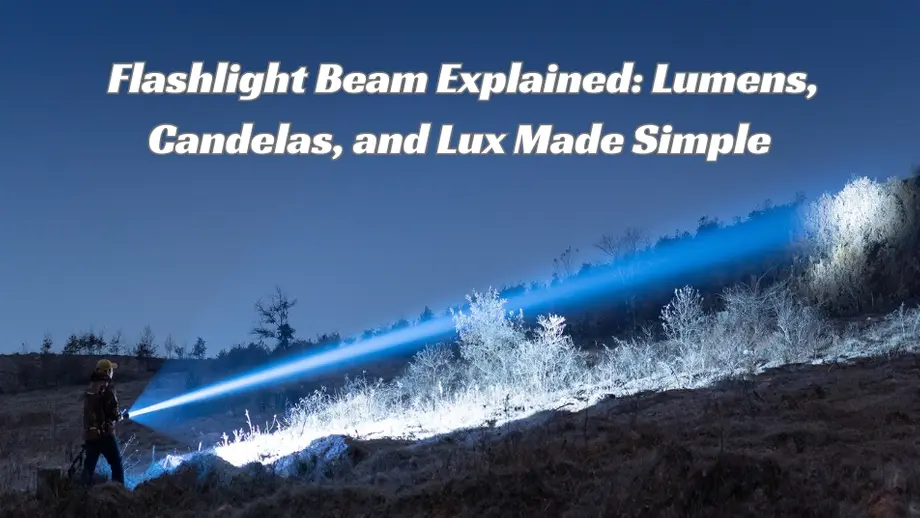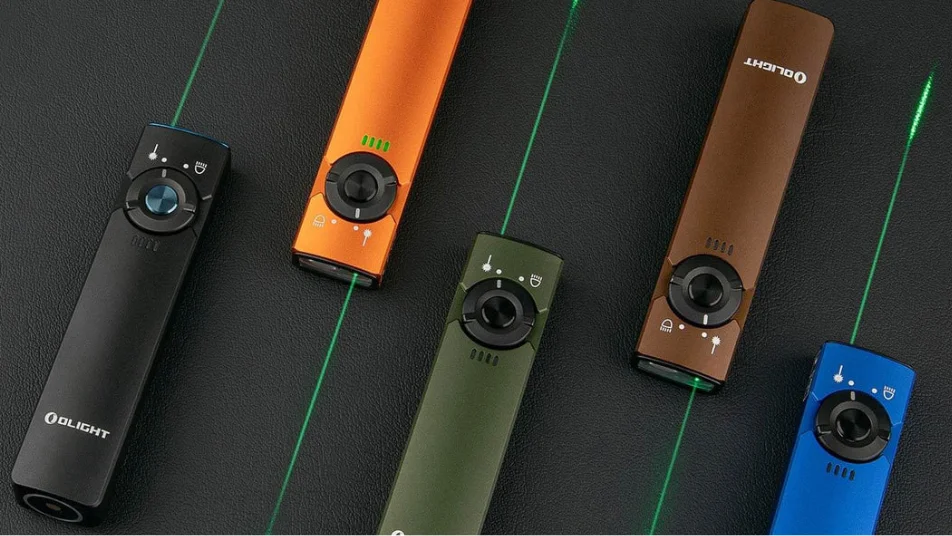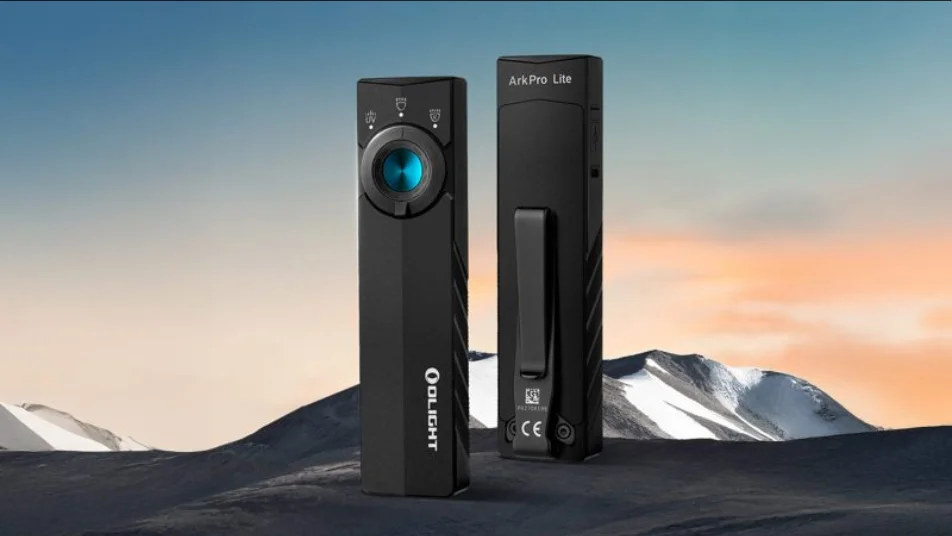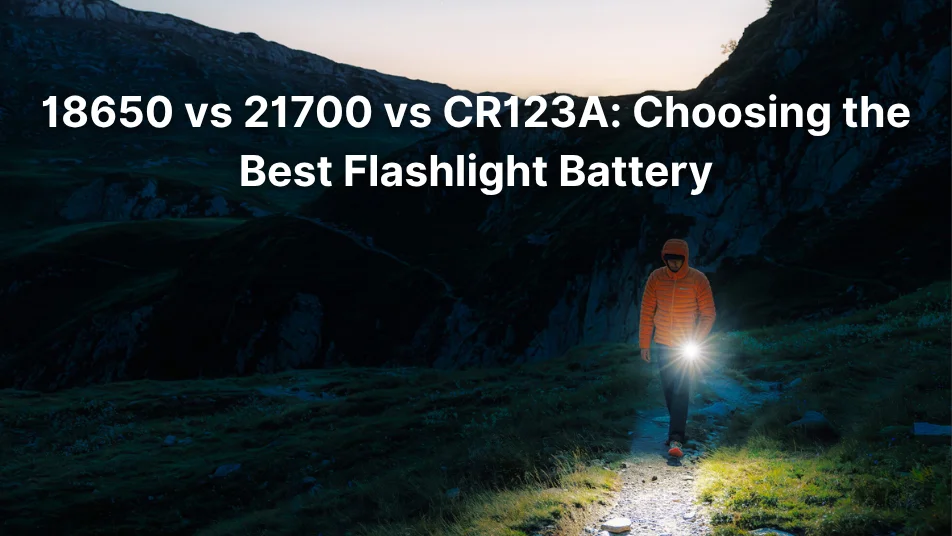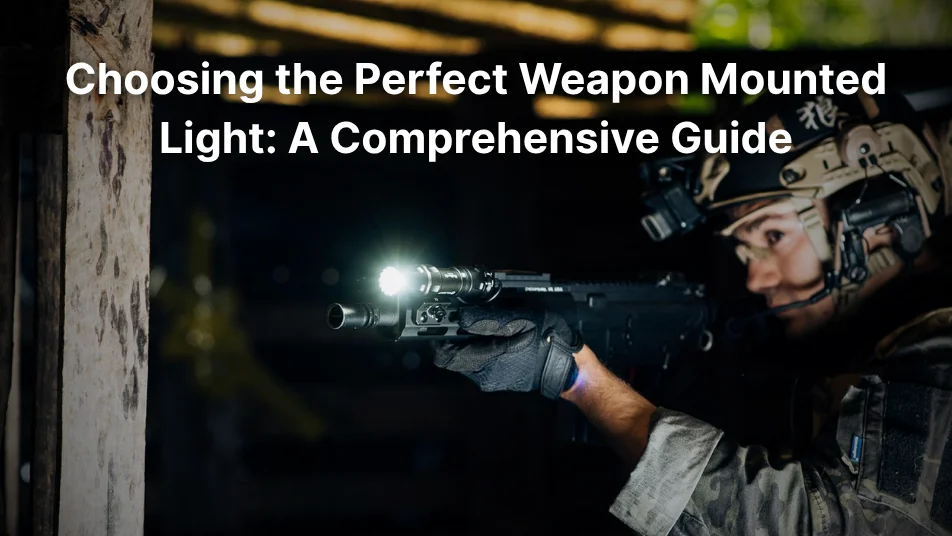When you're shopping for a flashlight — whether for camping, search and rescue, or everyday carry — you'll often come across terms like lumens, candelas, and lux. These might sound like technical jargon, but understanding them can help you make a smarter purchase and choose the right light for your needs.
In this article, we'll walk you through what each of these terms means and how they relate to real-world flashlight performance. To make things easier to understand, we'll refer to two of Olight's top-tier models: the Javelot Turbo 2 and the Marauder Mini.
Lumens Explained: How Bright Is Your Flashlight Really?
Lumens refer to the total amount of visible light a flashlight produces in all directions. The more lumens a flashlight has, the brighter it appears overall. Lumens help you gauge how well a light can flood an area with brightness.
For example, the Marauder Mini can output up to 7,000 lumens, which is bright enough to illuminate an entire forest path, large room, or emergency situation. It's perfect for users who need intense, wide-angle illumination in both outdoor and indoor environments.
To put it simply, lumens tell you how much light a flashlight puts out — like the volume of water flowing from a hose, regardless of direction.
Candelas and Beam Distance: How Far Can Your Light Reach?
While lumens measure total output, candelas measure how focused that output is in one direction. In other words, candelas tell you the intensity of the beam.
A flashlight with a high candelas rating creates a tight, powerful beam that travels far. For instance, the Javelot Turbo 2 produces an extraordinary 576,715 candelas, which enables it to reach distances up to 1,500 meters — nearly a full mile. This kind of beam is ideal for spotting wildlife, conducting search operations, or any situation where long-range visibility is key.
If lumens are like the total amount of light, candelas are how sharply that light is focused in one spot.
What Is Lux? Measuring How Light Hits a Surface
Lux is another way to understand light output, but it deals with how much light actually falls on a specific surface. You can think of lux as measuring light intensity at a certain point rather than the overall output. It depends on how far away the light source is — the farther the beam travels, the less lux you get on the target.
Although lux is not always highlighted in flashlight specs, it's used in calculating how far a flashlight can project useful light. By technical standards, beam distance is defined by how far the light can go before the brightness drops to 0.25 lux — about the same amount of illumination as a full moon on a clear night.
Understanding Beam Distance Without the Math
Instead of diving into formulas, here's what you need to know: a flashlight's beam distance tells you how far its light can travel before it becomes too dim to be considered useful. This is based on how tightly the beam is focused (candelas), not just how bright it is overall (lumens).
The Javelot Turbo 2, for example, can reach up to 1,500 meters because of its exceptionally high candelas rating, not because of raw lumen power. Meanwhile, the Marauder Mini combines strong lumens with a broader beam that covers more area but doesn't throw quite as far — maxing out around 600 meters.
So, if you're looking for raw distance, choose a flashlight with high candelas. If you want to light up a wide space around you, high lumens are more important.
Which Flashlight Is Right for You?
Choosing between the Javelot Turbo 2 and the Marauder Mini depends on your needs:
If you're looking for a flashlight with maximum beam distance and pinpoint accuracy — ideal for hunting, long-range searching, or signaling — the Javelot Turbo 2 is your go-to tool. It delivers a laser-like beam that cuts through darkness effortlessly.
If you need a powerful light that can flood your surroundings, switch between spot and flood modes, and even use color filters (red, green, blue), then the Marauder Mini offers unmatched versatility. Its compact size, combined with a high lumen output and multiple light modes, makes it perfect for general use, emergencies, and outdoor activities.
What Influences Flashlight Performance?
Several factors determine how a flashlight behaves:
Distance: As the distance between the light and the target increases, the intensity of light (lux) at the target drops significantly. However, the beam's candelas rating stays the same — it only describes the strength of the beam at the source.
Beam Angle: A narrower beam (or spotlight) has higher candelas and travels farther, while a wider beam (or floodlight) spreads lumens over a broader area but won't reach as far.
Luminous Efficiency: This refers to how effectively a flashlight turns power (measured in watts) into visible light (measured in lumens). The higher the efficiency, the more light you get without draining your battery too quickly — a key point in high-performance flashlights like Olight's.
Final Thoughts
Understanding lumens, candelas, and lux isn't just for engineers or enthusiasts — it helps every user choose the right flashlight for the right job.
Lumens give you a sense of how bright the flashlight is overall.
Candelas help you understand how far and focused the beam is.
Lux explains how much light reaches a surface, depending on the distance.
So whether you're hiking through the dark, preparing for a power outage, or setting up for tactical operations, knowing how these elements work together makes all the difference.
🔗 Explore the Flashlights Mentioned:
Javelot Turbo 2 – Javelot Turbo 2 1500m Long-Range Flashlight- Olight
Marauder Mini – Marauder Mini Powerful LED Flashlight With RGB- Olight
📺 Want to Learn More?
Check out this helpful YouTube breakdown: Lumens, Lux, and Candela EXPLAINED | Diode Dynamics

